The science of reading has been ALL the buzz lately, but if you’re secretly scratching your head and thinking that you don’t REALLY understand what it means yet, don’t worry. You’re not alone! And I promise this rundown will help break it all down for you.
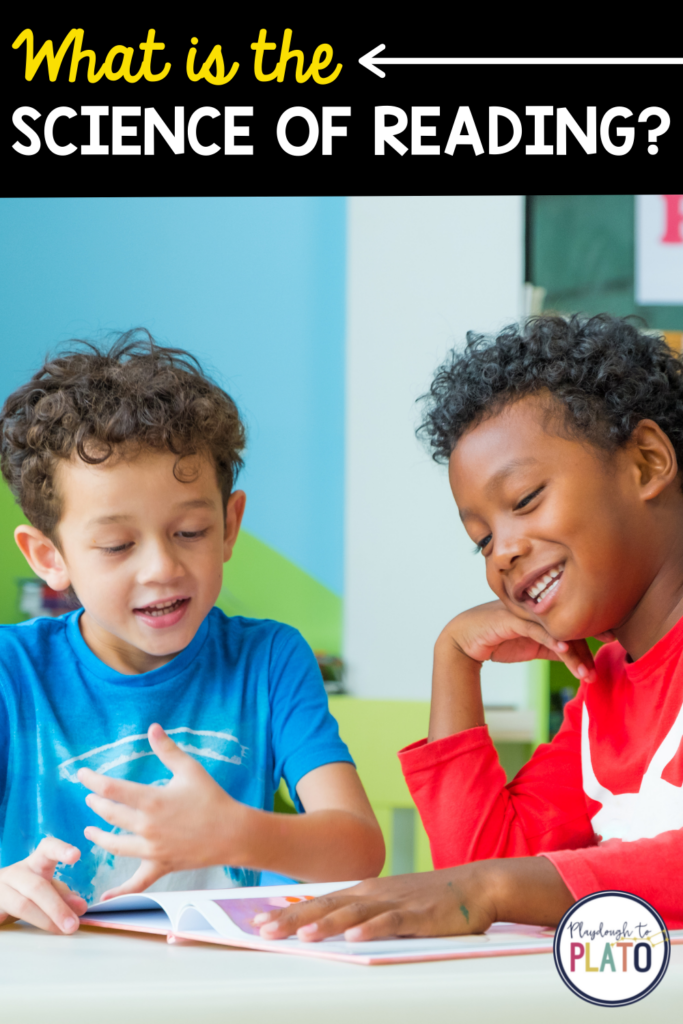
The Reading Wars
Before we dive into the science of reading, it’s important that we have a quick chat about the reading wars – a long standing debate about the best way to teach reading.
You can imagine a line with whole language on one side and phonics on the other…
Whole language fans believe that children will naturally learn how to read just like they learn to speak. They encourage reading good books so students fall in love with literature and teaching new readers to sound out unknown words with cues like the context of other words around it.
True whole language fans only teach phonics when it is relevant to a specific word they’re focusing on so, for instance, a whole language teacher might talk about the SH digraph if students were reading the word ship but the digraph lesson would not stretch far beyond that single word.
Phonics fans, on the other hand, believe that children learn to read best when they are taught how to sound out specific letter combinations and blend them together to make words.
In the example above, a phonics-based teacher would purposefully lead a lesson on the SH digraph. She might teach students a helpful SH poem and then have them read a variety of SH words like ship, shut, shin, she, etc. The focus would be on the letter sounds, not the words.
If you or someone you know has been teaching for a while, you’ve seen the reading wars in action. A lot of teachers refer to it as a pendulum that’s swung back and forth from one end of the spectrum to the other.
And that brings us to modern day…
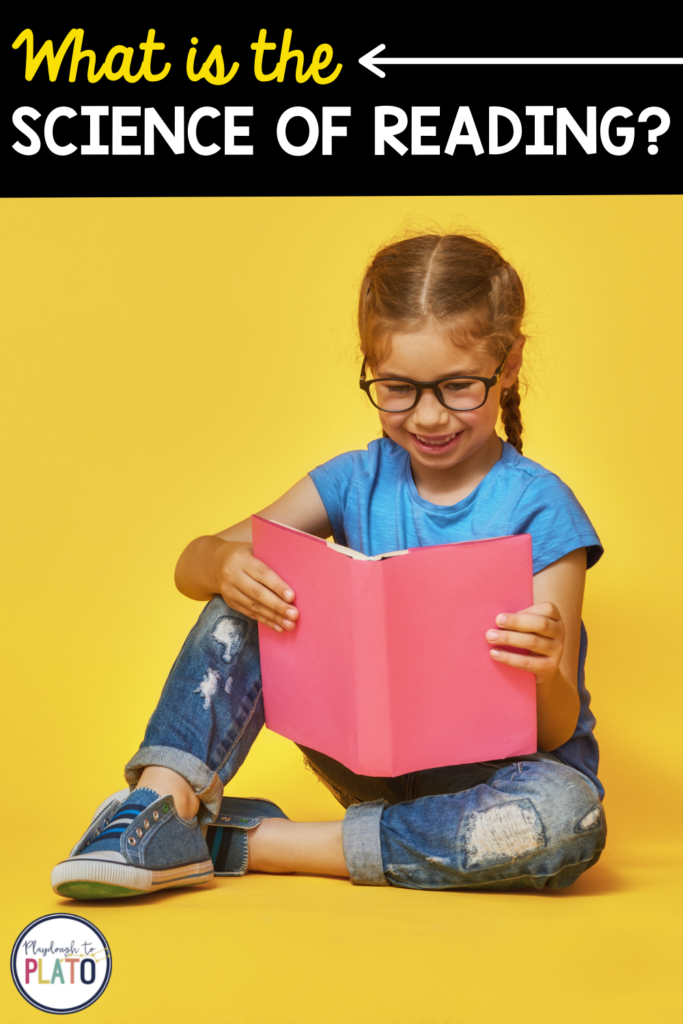
What is the Science of Reading?
Scientists have been studying how students learn to read for more than five decades and the findings of their research is called “the science of reading”. Based on those findings, back in 2018, a journalist named Emily Hanford argued that reading was being taught the wrong way – teachers were using curriculum that didn’t take into account how brains work. Instead, they should be relying on proven, research-based strategies.
And the reading wars were ignited again!
The science of reading is not a curriculum or a book or a specific teaching strategy…
It’s a very WIDE body of knowledge that covers everything from how students first learn to sound out words to how they become fluent readers, understand what they are reading, make connections to their own life…. the list is long.
Imagine if ALL of the science journal articles and case studies that have been published on reading over the last 50 years were stacked in piles and you’ll start to wrap your brain around just how broad the science of reading really is.
And that brings me to an important point…
If you watch TikTok videos or Instagram reels, you’ve probably seen a lot of science of reading fans focusing on phonics and phonological awareness. While they are definitely two critical pieces of the puzzle, it’s important to note that there are also other parts too.
For instance, without teaching students what words mean, they’ll never be able to understand and analyze the stories they sound out.
And if students learn the sounds letters make but don’t also have the working memory they need to keep those sounds in their head long enough to be able to blend them together and read the word, they’ll always struggle with fluency.
So, Where Do We Go from Here?
First, don’t panic! If you are worried that you’re not incorporating research-based strategies into your lesson plans yet, don’t worry – following along with me is a great place to start.
It’s likely that you are doing many science-backed things already and now you can make tweaks and updates as needed. I’ll continue sharing tons of helpful tips and strategies right here on the blog and over on Instagram and Facebook.
And if you want a research-based, easy-to-follow system for helping EVERY reader get bigger results, join my 5-day SoR challenge called The Science of Reading in Action. It’s where I go all in and give you the proven tools and strategies that are helping thousands of students learn to read. You’ll get everything you need in one go-to spot.
The Science of Reading in Action
The thing that sets this training apart is the word ACTION. There’s nothing worse than taking a training, getting inspired, and then realizing that you have no idea how to actually implement everything you learned.
That’s why this 5-day challenge pairs the SoR knowledge with the tools and strategies you need to put it into action.
But I never want you to just take my word for it – I really want you to see the impact for yourself. Here are just a few of the successes our alums shared during the training:
I want YOUR success stories to be next! Hop over and snag your spot inside the 5-day science of reading challenge.


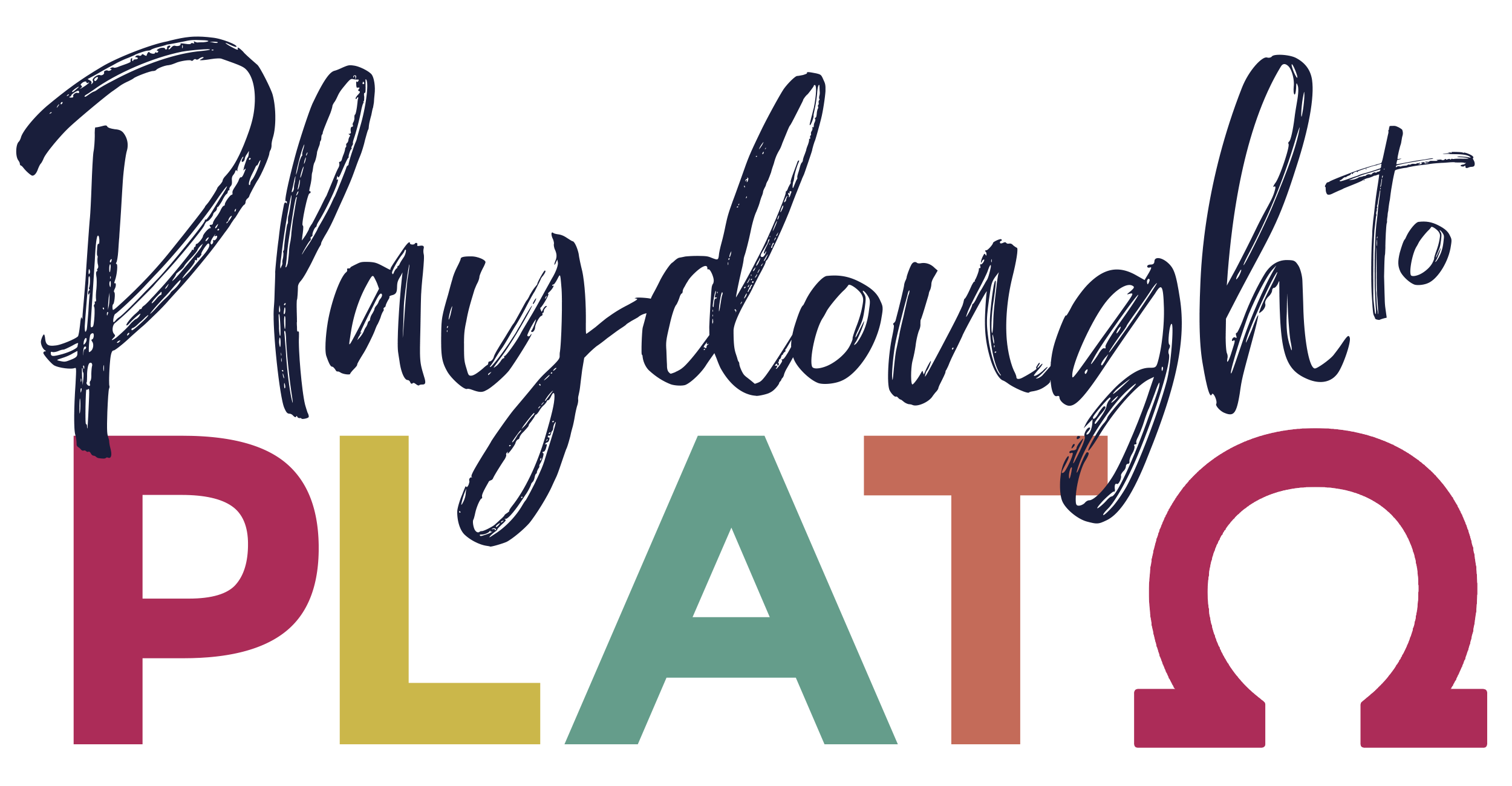

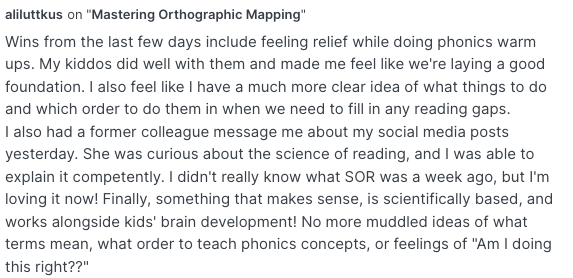

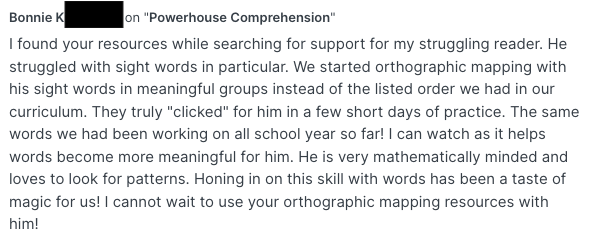
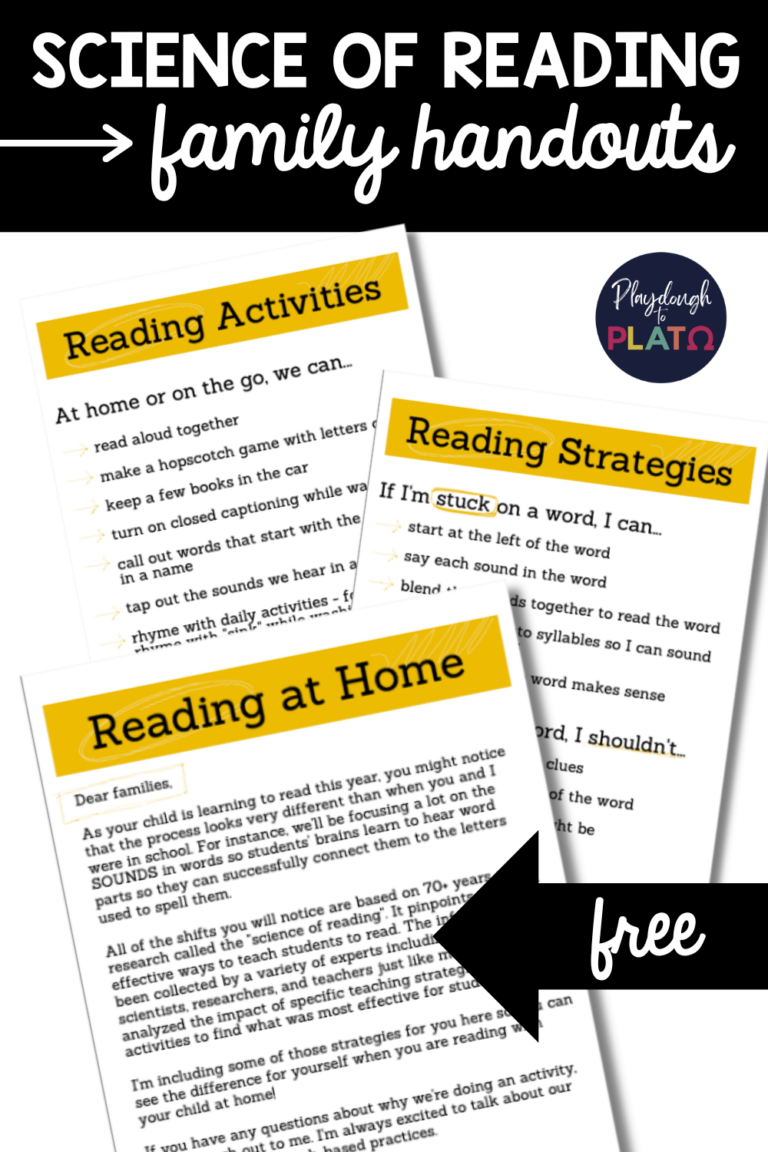
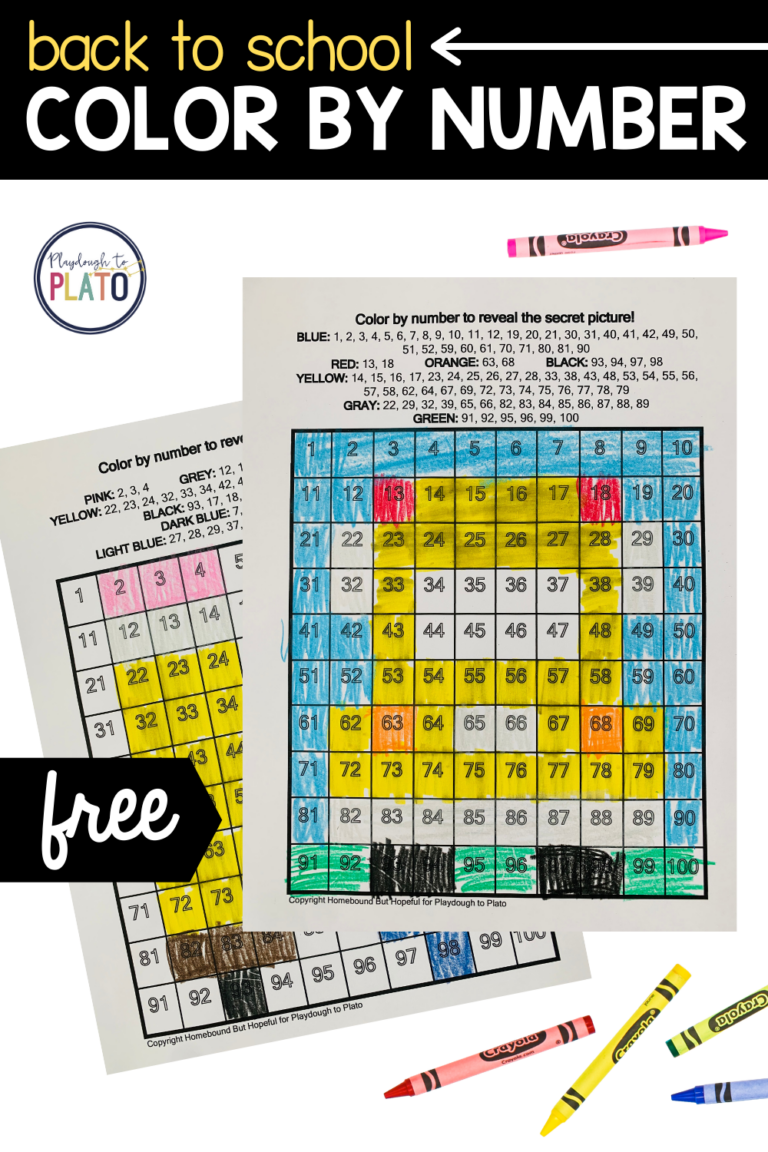
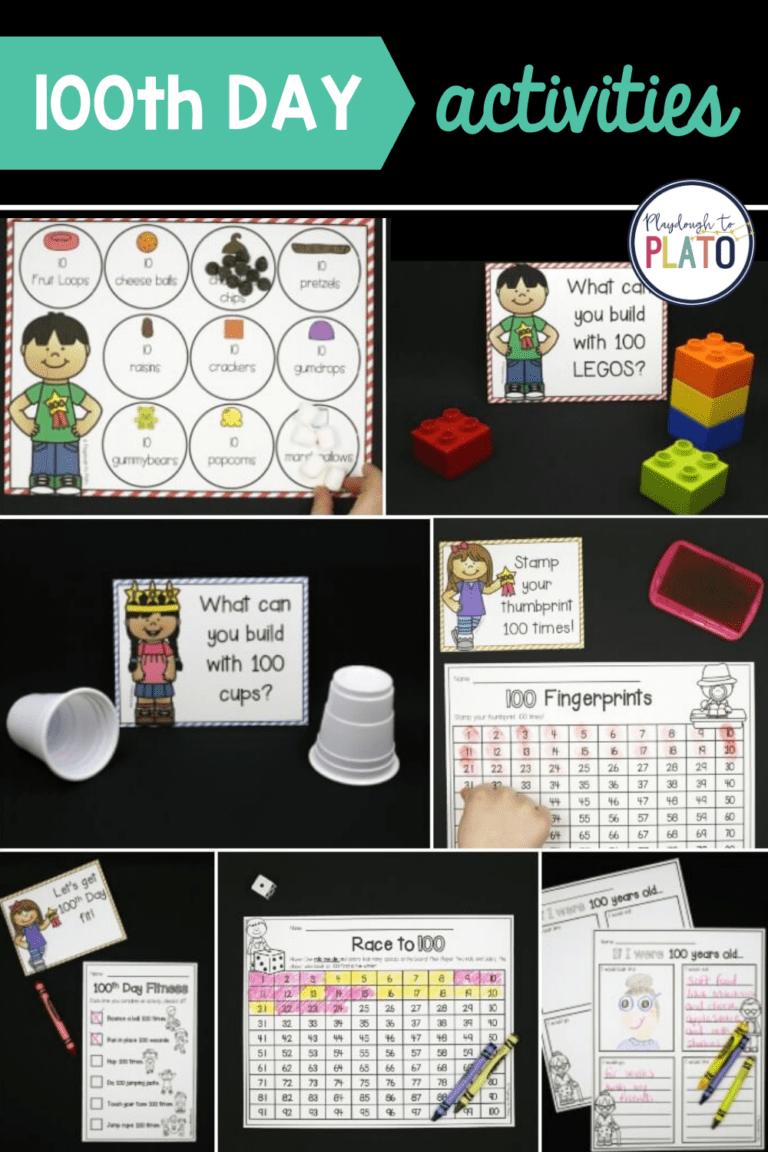
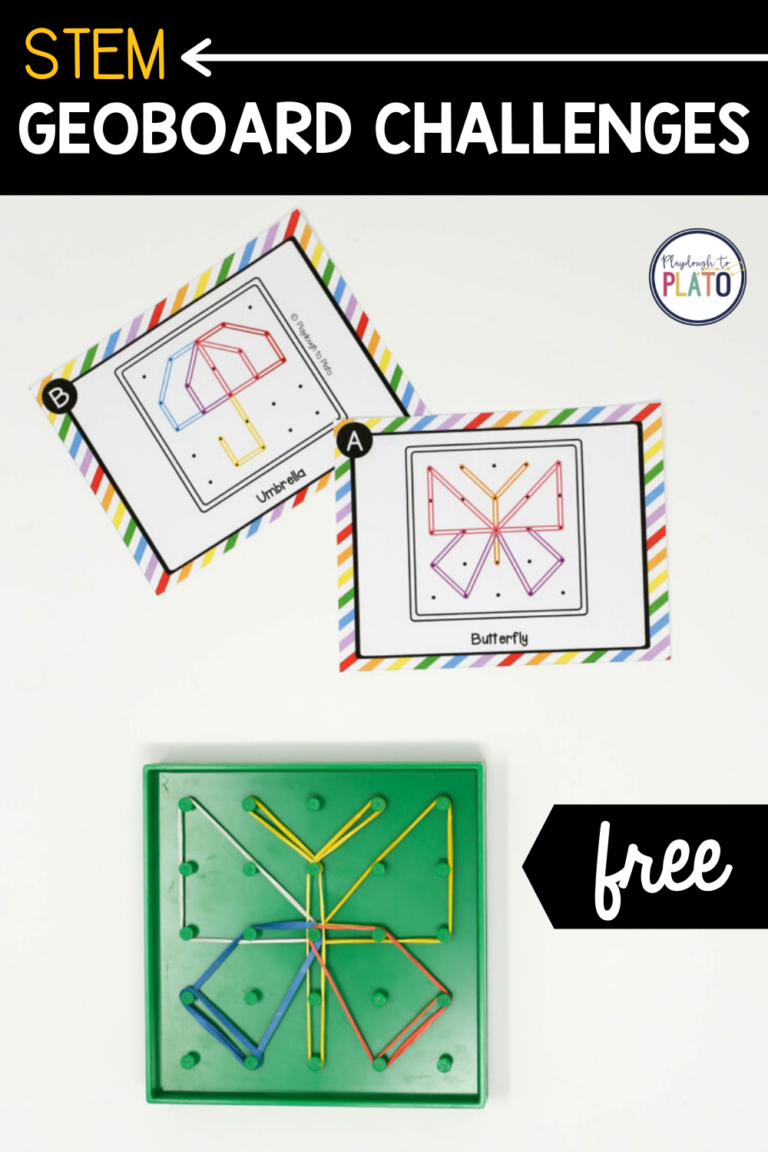
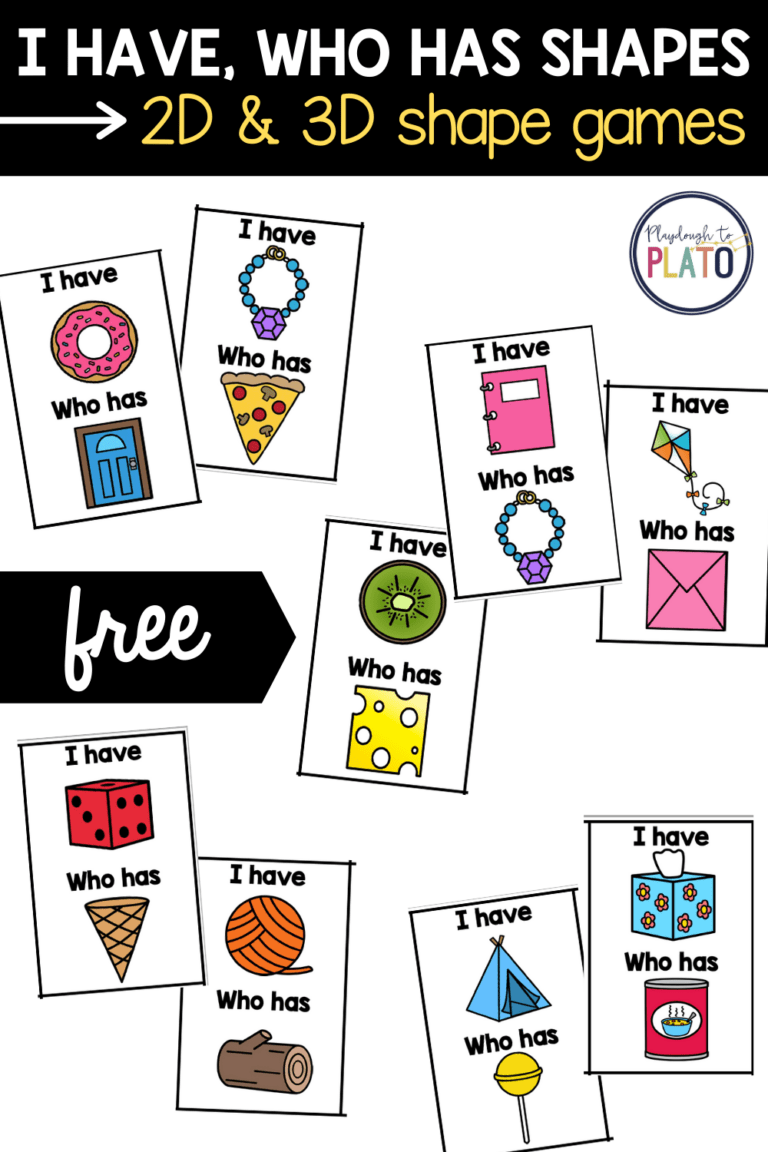
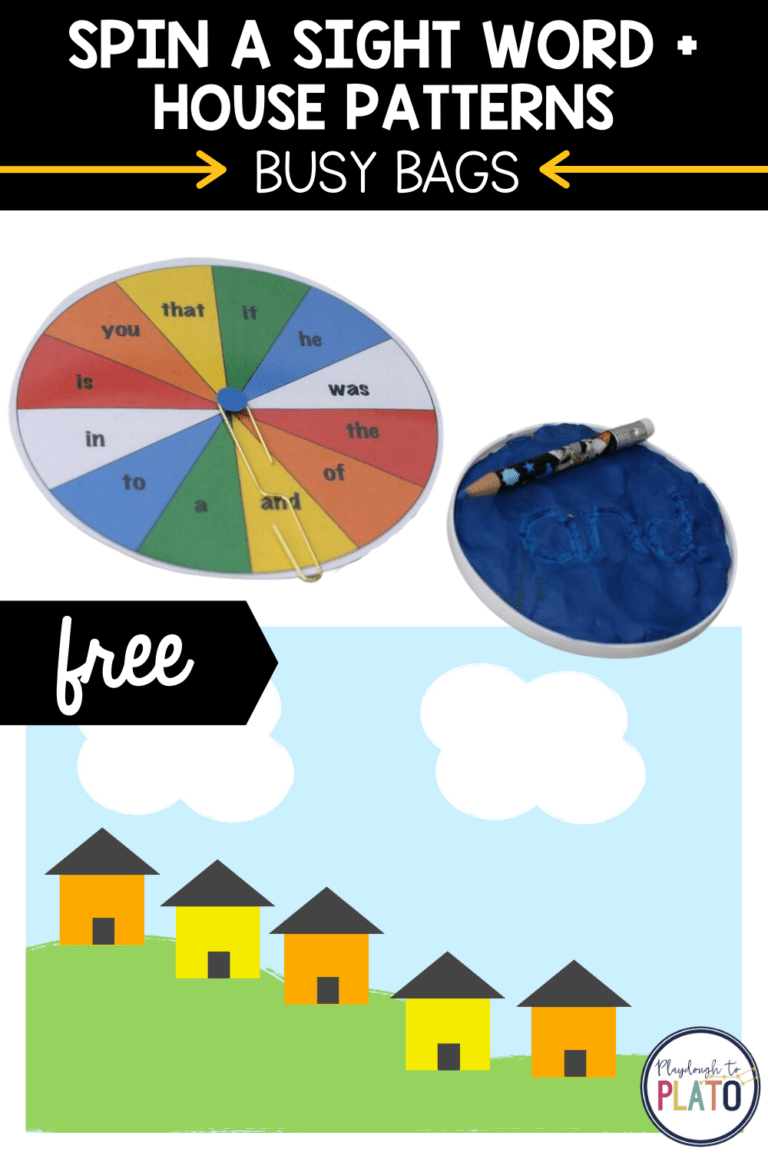
Interested in learning more about teaching reading.
YAY! I am so happy to hear that Jane! Are you signed up to join The Reading Roadmap?
How much does it cost?
Hello- I am interested however I have a few questions I could not find answers to in the information provided. How long is each session? What time does it start each day? Do we need to be present at a specific time or can we watch a recorded version at a later time more convenient to busy summer schedules? Thanks much : )
Hello! Malia, thanks for the insight “the science of reading.” It is really wonderful.